
The Bull Hotel is a Grade II-listed building in Llangefni, Anglesey, built during the nineteenth century in a seventeenth-century vernacular style. It replaced an earlier inn built on the same site.

The Bull Hotel is a Grade II-listed building in Llangefni, Anglesey, built during the nineteenth century in a seventeenth-century vernacular style. It replaced an earlier inn built on the same site.
The building was constructed around 1850 and replaced a seventeenth-century inn on the same site known as the Pen-y-Bont that had been renamed as the Bull's Head in 1817. The hotel is built in a seventeenth-century vernacular style, faced with limestone rubble and freestone facings, and fitted with a slate roof. The main part of the hotel is a double-depth, three-storey structure with a full-height gabled wing to the right rear to form an L shape. This is abutted by lofted tackrooms and servant's quarters which comprise one wing of the U-shaped range of outbuildings behind the hotel. The opposite side are lofted stables, connected to the tackrooms by a single-storey row of coach-houses. [1]
The entrance faces north and has four bays with a lateral chimney protruding to the left that are partly corbelled over the ground floor. The roof has three gabled dormers over a pedimented, two-storey, rectangular bay window. The other windows are small-paned casements in freestone mullioned and transomed surrounds; the first-floor windows with flat moulded labels. [1]
The hotel was listed on 11 October 1986 by Cadw "as a good, substantially complete example of a Victorian coaching Inn and courtyard range. The Inn is an ambitiously scaled and particularly well-detailed example of neo-vernacular design, prominently sited in the centre of the town, it also forms a group with the adjacent town hall and clock." [1]

Woolley Hall is a country house in Woolley, West Yorkshire, England. It is a Grade II* listed building.

The Old Hall Hotel is a public house and restaurant in High Street, Sandbach, Cheshire, England. It was built in 1656 on the site of a previous manor house, and since been extended. In the 18th century it was used as a coaching inn and hotel. It closed as a hotel in 2005; it was unused for four years, and its fabric suffered serious deterioration. In 2010 the building was bought by Brunning and Price, a subsidiary of the Restaurant Group, who repaired and restored it. It was reopened as a public house and restaurant in 2011. The building is timber-framed, and is recorded in the National Heritage List for England as a designated Grade I listed building.
Peover Hall Stable Block is in the grounds of Peover Hall, Cheshire, England. It is recorded in the National Heritage List for England as a designated Grade I listed building.

Bratton Court in the hamlet of Bratton within the parish of Minehead Without, Somerset, England was built as a manor house, with a 14th-century open hall and 15th-century solar hall. It is within the Exmoor National Park and has been designated as a Grade I listed building. It was enlarged in the 17th century and extensively altered in the late 19th and early 20th centuries. It is now a farmhouse divided into 2 dwellings. The gatehouse and the barn at the west end of the courtyard date from the fifteenth century and are also listed as Grade I buildings.

The Luttrell Arms in Dunster, Somerset, England was built in the late 15th century and is located in the centre of the medieval town of Dunster. The building has been designated as a Grade II* listed building since 22 May 1969. The original building has been enlarged over the years by addition of further wings. It is now used as a hotel.
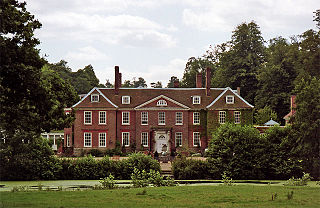
Chilston Park is a country house in Boughton Malherbe, Kent, England. Started in the 15th century, the house has been modified many times and is a Grade I listed building, currently operated as a country house hotel.
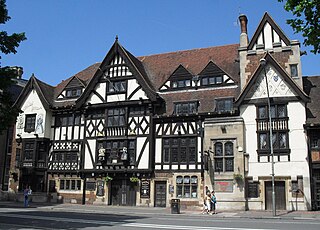
The King and Queen is a pub in the seaside resort of Brighton, part of the city of Brighton and Hove. The present building, a "striking" architectural "pantomime" by the prolific local firm Clayton & Black, dates from the 1930s, but a pub of this name has stood on the site since 1860—making it one of the first developments beyond the boundaries of the ancient village. This 18th-century pub was, in turn, converted from a former farmhouse. Built using materials characteristic of 16th-century Vernacular architecture, the pub is in the Mock Tudor style and has a wide range of extravagant decorative features inside and outside—contrasting with the simple design of the neighbouring offices at 20–22 Marlborough Place, designed a year later. English Heritage has listed the pub at Grade II for its architectural and historical importance.

The George Inn is a Grade II-listed 18th-century public house on the Isle of Portland, Dorset, England. It is situated within the village of Easton, at the west end of the hamlet of Reforne. The pub is located close to St George's Church and St George's Centre.

Toowoomba Police Station Complex is a heritage-listed police station at 50-52 Neil Street, Toowoomba, Queensland, Australia. It was designed by Raymond Clare Nowland and built in 1935. It was added to the Queensland Heritage Register on 5 October 1998.
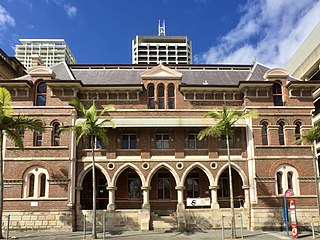
The Queensland Government Printing Office is a heritage-listed printing house at 110 George Street and 84 William Street, Brisbane City, Queensland, Australia. It was designed by John James Clark, Francis Drummond Greville Stanley, and Edwin Evan Smith and built from 1884 to 1887 by John Petrie and Thomas Hiron. It is also known as The Printing Building, Sciencentre, Public Services Club, and Registry of Births, Deaths & Marriages. It was added to the Queensland Heritage Register on 21 October 1992.
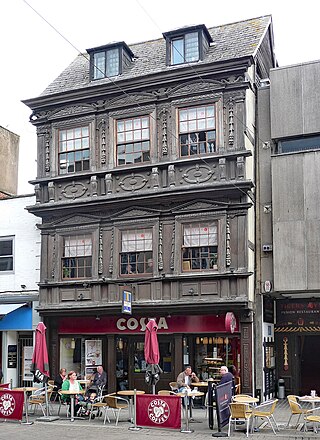
9 and 9A Southgate Street is a 17th-century Jacobean timber-framed merchant's house on Southgate Street, Gloucester. It has been a Grade I listed building since 23 January 1952. 9 Southgate Street is now occupied by Costa Coffee and 9A Southgate Street is occupied by The Tiger's Eye restaurant.
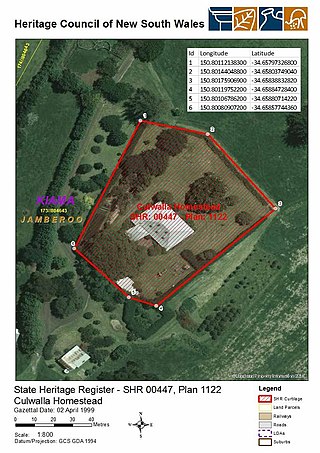
Culwalla Homestead is a heritage-listed former dairy farm and now residence located 2km east of Jamberoo Main Road, Jamberoo, Municipality of Kiama, New South Wales, Australia. It was built in 1858 by James Marks. It was added to the New South Wales State Heritage Register on 2 April 1999.

Hartley historic site is a heritage-listed historic village located adjacent to the Great Western Highway, Hartley, City of Lithgow, New South Wales, Australia. It was built from 1837 to 1850. It is also known as Hartley Historic Site and Hartley Township. The property is owned and protected by Office of Environment and Heritage, an agency of the Government of New South Wales. It was added to the New South Wales State Heritage Register on 2 April 1999.

Australiana Pioneer Village is a heritage-listed open-air museum at Rose Street, Wilberforce, City of Hawkesbury, New South Wales, Australia. It was built from 1969 to 1970. The property is owned by Hawkesbury City Council. It was added to the New South Wales State Heritage Register on 20 February 2004.
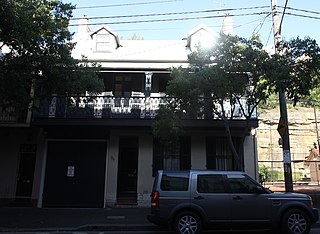
Toxteth is a heritage-listed residence located at 94 Kent Street, in the inner city Sydney suburb of Millers Point in the City of Sydney local government area of New South Wales, Australia. It was added to the New South Wales State Heritage Register on 2 April 1999.

Sværtegade 3 is a listed property in the Old Town of Copenhagen, Denmark, consisting of a four-storey building from the 18th century fronting the street and a large, three-winged building from 1829 in the courtyard. J. G Schwart & Søn was from 1806 to 1983 based at the site. The entire complex was listed on the Danish registry of protected buildings and places in 1918. Harald Conrad Stilling's shop facade and interior from 1847 is part of the heritage listing.

Llangefni Town Hall is a civic building dating back to the mid 19th-century, in the town of Llangefni, Anglesey, Wales. It is a Grade II listed building.
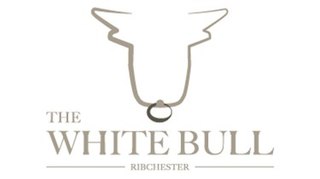
The White Bull is a public house and inn on Church Street in the English village of Ribchester, Lancashire. It dates to 1707 and is a Grade II listed building with some unique exterior features.

The Shire Hall is a municipal structure in Glanhwfa Road, Llangefni, Anglesey, Wales. The building, which served as the headquarters of Anglesey County Council, is a Grade II listed building.

Torvegade 28/Wildersgade 26 is an 18th-century building complex situated on the corner of Torvegade and Wildersgade in the Christianshavn neighborhood of central Copenhagen, Denmark. It consists of a four-storey corner building and an adjacent three-storey former warehouse in Wildersgade. The two buildings were both heightened with one storey in 1852. The property was for almost two hundred years—from 1727 until 1917—owned by bakers. Their bakery was located in a side wing. A sandstone tablet with a relief of a crowned kringle and a cartouche with the initials of a former owner and the year ""Anno 1770" can still be seen above the shop entrance in Torvegade. The entire complex was listed in the Danish registry of protected buildings and places in 1982.